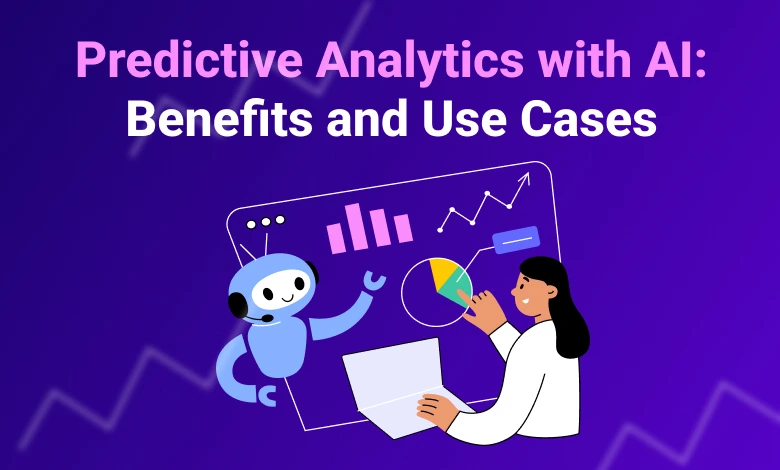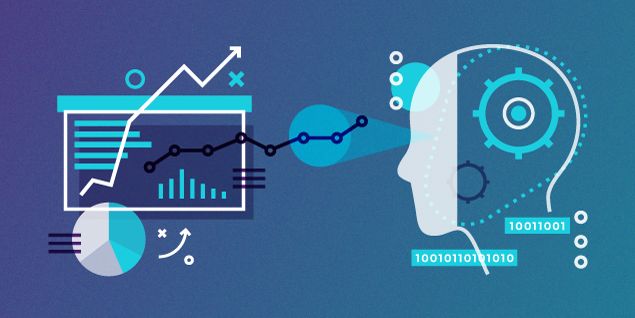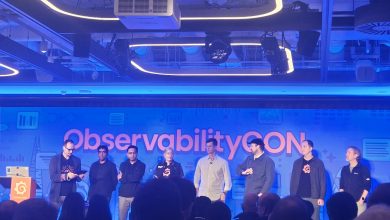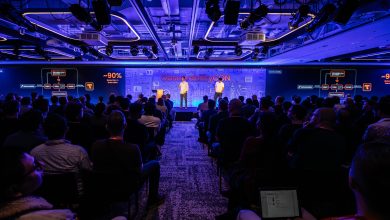
Predictive analytics powered by artificial intelligence (AI) is swiftly becoming essential for businesses looking to advance their strategies and operations. By analysing historical data, AI can forecast future trends, behaviours, and outcomes, helping companies make more informed decisions. The impact of this technology is significant, as evidenced by its market growth.
The global predictive AI market is projected to grow from $14.9 billion in 2023 to $108 billion by 2033, at a CAGR) of 21.9% during this period. This remarkable growth highlights the increasing reliance on AI development services to predict customer needs, optimize operations, and stay ahead in a competitive market.
In this blog, we’ll dive into the benefits of predictive analytics with AI and explore some key use cases where it’s making a difference.
Predictive Analytics with AI: What Does it Entail?
AI for predictive analytics integrates advanced technologies like deep learning, natural language processing (NLP), computer vision, and reinforcement learning into data analysis. These predictive analytics AI tools improve the ability to forecast trends and behaviors by understanding complex patterns in large data sets. For example:
- Deep learning uses layered neural networks to process data, making it effective for sectors like finance and healthcare.
- NLP interprets human language, aiding in sentiment analysis to predict consumer responses and market trends.
- Computer vision analyses visual information, which is useful in retail for tracking consumer habits and in manufacturing for spotting potential equipment issues.
- Reinforcement learning optimizes decision-making processes in logistics by adapting to new data for better route and inventory management.
AI’s robust processing capabilities allow it to uncover insights that traditional methods might miss. This leads to more precise predictions and better strategic decisions across various industries.
Benefits of Predictive Analytics with AI
Predictive analytics with AI offer several benefits that can significantly improve decision-making and operational efficiency across various industries. Here are some key advantages:
-
Improved Accuracy
AI-based predictive analytics uses sophisticated algorithms and machine learning techniques to analyse large data sets. It can identify patterns and correlations that human analysts and traditional methods would otherwise miss. This means predictions made using AI are often more accurate, aiding businesses in demand forecasting, financial modeling, and health diagnostics.
-
Faster Decision-Making
Predictive analytics AI systems automatically analyze data, thus saving time to extract insights from data. Such speed is very important in industries where a rapid response is required, such as in stock trading, emergency response, or dynamic pricing environments. AI for predictive analytics helps businesses respond quickly and efficiently to market changes through real-time or near-real-time analytics.
-
Cost Reduction
Through the prediction of future trends and related issues, AI predictive analytics proves to be an efficient tool for resource allocation. Some instances of this are manufacturing, where AI-based predictive maintenance can predict machinery failures before they happen. This helps reduce downtime and repair costs. Similarly, predictive analytics powered by AI helps a business optimize inventory levels through accurate distribution, thus mitigating overstocking or stockouts.
-
Improved Customer Experience
AI predictive analytics can predict customer’s needs and preference, which helps businesses change how they deliver their services and make their products based on the results. For instance, retailers would use AI in predicting what customers would like best and stock accordingly or personalize the marketing strategy towards individual consumer preference. This makes customers satisfied and loyal.
-
Risk Management
AI-based predictive analytics is also invaluable in identifying and assessing risks, whether they are financial, operational, or strategic. Financial institutions use AI to predict credit risk, adjust credit scores, and detect potential fraud. Similarly, businesses can use predictive analytics AI to assess the risks of market shifts. This helps them adjust strategies proactively rather than reactively.
Use Cases of Predictive AI Analytics Across Industries
Here are some use cases and examples of how AI and predictive analytics is used across different industries:
-
Healthcare
Patient Care: Doctors use AI predictive analytics to identify patients at risk of complications by analysing historical medical records, test results, and real-time data from health trackers. This allows hospitals to anticipate potential health issues, intervene earlier, and reduce hospital readmissions.
Personalized Treatment: AI helps determine the most effective medications or treatments by analysing a patient’s genetic data, medical history, and past treatment responses. This reduces guesswork and improves recovery outcomes by offering tailored treatment plans.
-
Finance
Credit Scoring: Instead of relying only on fixed factors like income and credit history, AI predictive analytics examines a broader range of data, including spending habits and even behavioural patterns from social media. This enables banks and financial institutions to assess creditworthiness more accurately, expanding access to credit while minimizing risk.
Fraud Detection: AI continuously monitors transactions to detect signs of fraud, such as unusual spending patterns, mismatched locations, or rapid cash withdrawals. By identifying these red flags in real time, AI helps prevent fraudulent activity, protecting both banks and customers from financial losses.
-
Retail
Inventory Management: Artificial intelligence predictive analytics analyzes sales history, seasonal demand, and external factors like economic trends or weather to predict future product demand. Retailers can use these insights to adjust stock levels, avoid shortages, and reduce excess inventory. This ultimately minimizes losses.
Customer Recommendations: AI studies customer behavior, including purchase history, browsing habits, and social media interactions, to predict what products they may be interested in. Online retailers use AI-driven recommendations to increase sales by suggesting relevant products, leading to a more personalized shopping experience.
-
Manufacturing
Predictive Maintenance: AI for predictive analytics track machinery performance in real time, detecting early warning signs of wear and tear. By predicting when a machine is likely to fail, manufacturers can schedule maintenance before a breakdown occurs, reducing downtime and saving costs on emergency repairs.
Production Optimization: AI predictive analytics helps manufacturers streamline production processes by analyzing factors like material availability, worker efficiency, and machine output. It predicts the best ways to configure production lines, improving efficiency and reducing waste.
-
Transportation
Route Optimization: Predictive Analytics AI processes real-time traffic data, weather forecasts, and vehicle conditions to recommend the most efficient routes for deliveries or ridesharing services. This reduces fuel costs, travel time, and delays.
Demand Forecasting: AI and predictive analytics helps transportation and logistics companies predict peak travel times, passenger volumes, and shipment demands. Airlines, taxi services, and logistics companies use these insights to adjust pricing, optimize fleet management, and ensure efficient resource allocation.
Conclusion
AI and predictive analytics have an impact on many industries. They help companies make better choices based on data. By looking at lots of information, businesses can be more accurate, decide things faster, spend less money, and keep customers happier. People already use predictive analytics in healthcare, money matters, stores, factories, and moving things around. It helps them run things and guess what might happen next.
As AI gets better, it will play a bigger part in predictive analytics. This will shake up how new ideas come about and how well things work across different fields. Companies that start using AI for predictive analytics will have a leg up in a world full of data.
FAQs
How is predictive analytics used in business along with AI?
AI and predictive analytics especially in data mining, help companies examine old data to predict future trends and boost productivity. This method spots key benefits and picks the best plans. Also, technology improves customer experiences by offering smooth and automatic services. Some examples are car vending machines, quick hotel check-ins, and car data tracking.
What is predictive analytics used for?
Predictive analytics tries to foresee future events, actions, and patterns based on old data. It helps businesses to assess risks, plan finances, understand customers, predict sales, and run smoother operations.
Where is predictive analytics used?
Many industries use predictive analytics. Healthcare uses it to guess patient risks, while banks use it to spot fraud. Stores use it to suggest products to customers. Factories use it to fix machines before they break. Shipping companies use it to find the best routes. It helps businesses to make their work better and get effective results.





